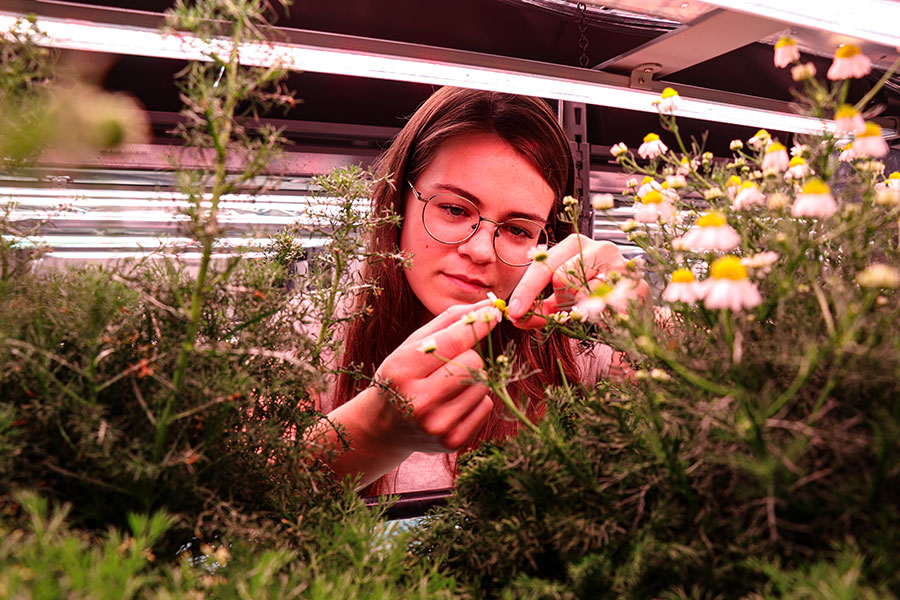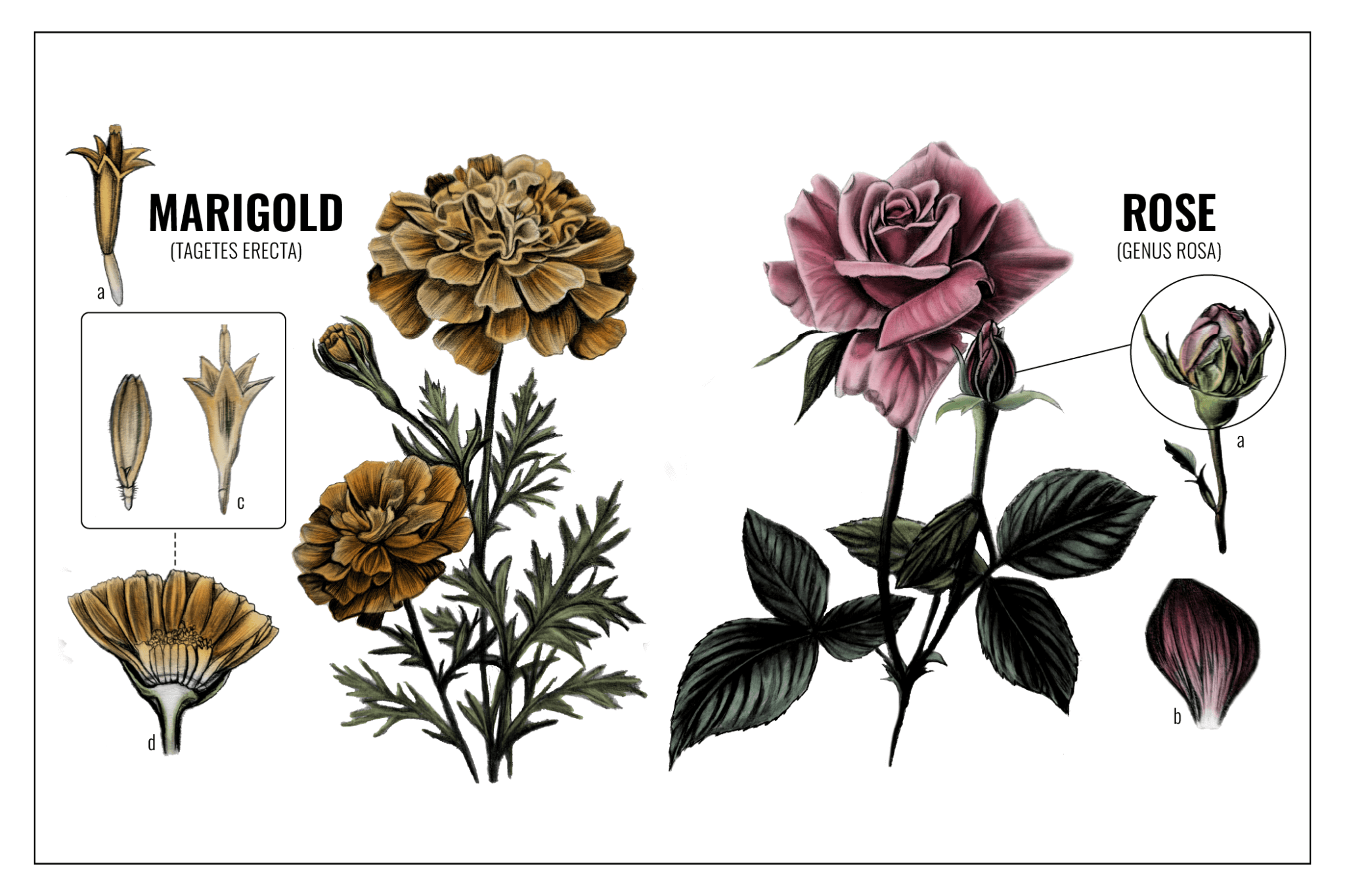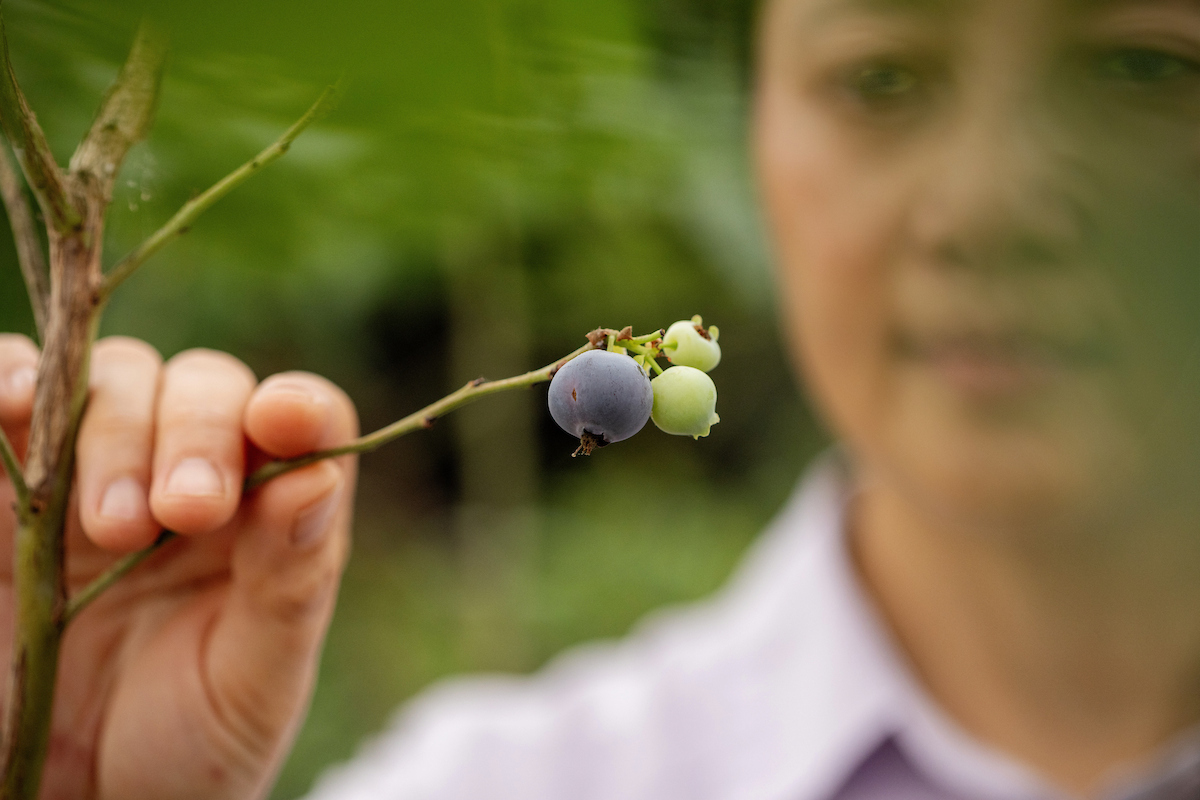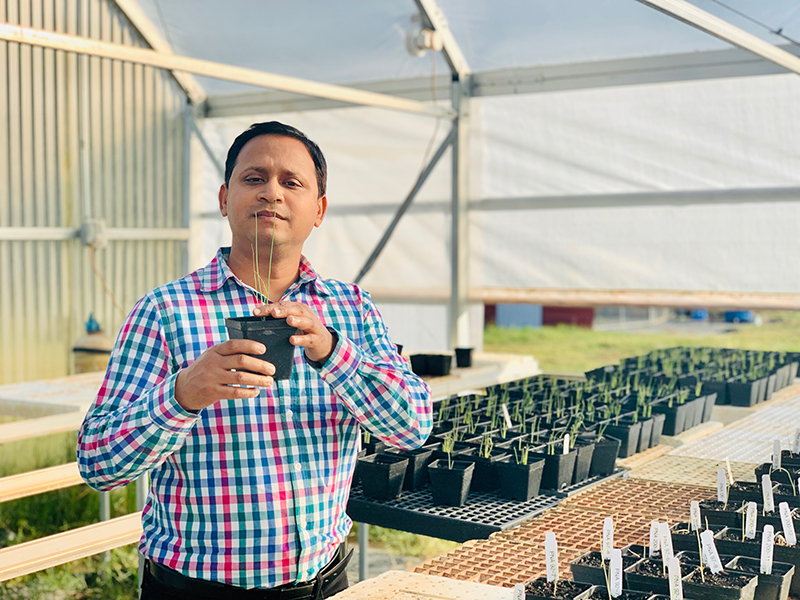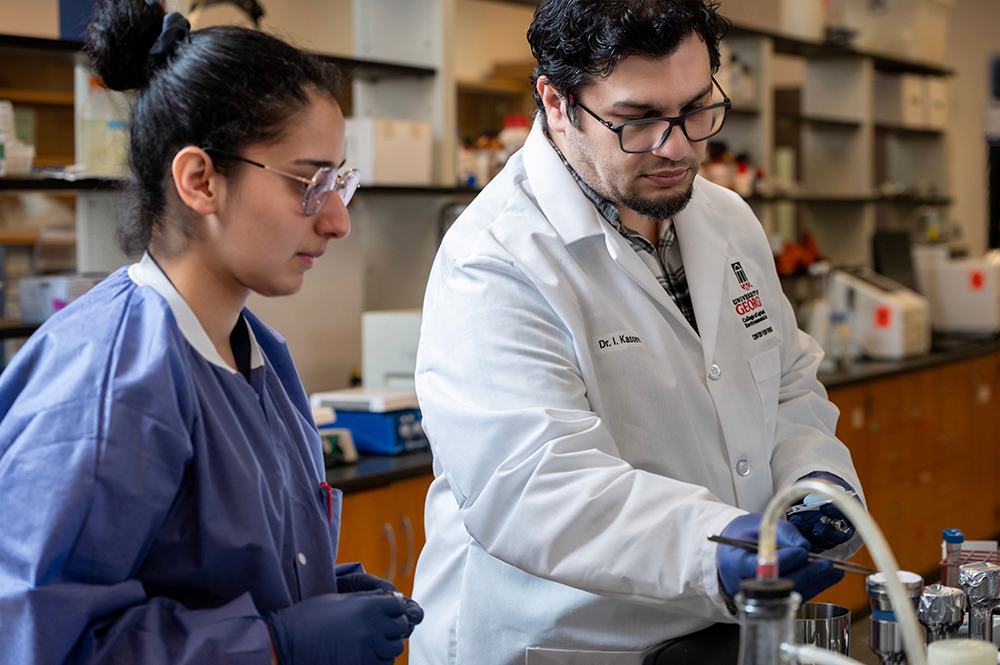 CAES News
CAES News
Uncharted Waters
Antibiotics are commonplace — used to treat minor and major infections, prevent infection post-surgery, and treat our pets and livestock. But what happens if these life-saving drugs lose their efficacy? Issmat Kassem, assistant professor at the University of Georgia College of Agricultural and Environmental Sciences, has asked this question for nearly two decades.




